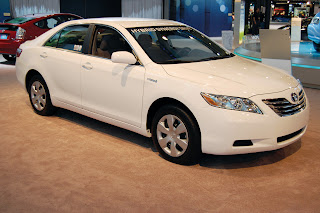Oil statistics back to 1859 are a little shaky, though this chart of oil's annual production history provides a useful overview of the early trends, if we ignore the portion devoted to projecting future output. From its current position of energy dominance, it's easy to forget that the initial success of oil was hardly a foregone conclusion, and its biggest early gains were matched by serious setbacks. While oil has never relinquished the lubricant markets it captured early on, kerosene met a very different fate. It was the most important oil product for several decades, rapidly penetrating illumination markets and displacing whale oil, which was facing its own imminent Peak Oil by then. However, it's no accident that one of the most important early markets for my former employer, Texaco Inc., which along with many other firms grew out of the great gusher at Spindletop, TX more than 40 years after Drake's well, was "oil for the lamps of China." By the early 20th century the US lighting market was already being swept by electrification. Oil was rescued from impending oblivion when a relatively unimportant byproduct called gasoline found its "killer ap" in the early automobile.
As impressive as the growth rates for wind and solar power have been over the last few years, they still fall short of the early growth of car ownership. Between 1901 and 1916, annual US car registrations grew from a few thousand units to over one million, a sustained compound average growth of around 40% per year. Over the same interval, oil production more than quadrupled, led by the combination of soaring demand for gasoline, which was produced by simple distillation of petroleum in "tea kettle" refineries, and the discovery of numerous large oil fields. This remarkable growth wasn't spurred by government incentives or economics that made oil and its products merely a little better than their closest competition. It was the result of a quantum leap in personal mobility facilitated by oil's extraordinary inherent advantages in convenience. Huge surpluses of energy could be extracted from the ground and delivered relatively easily and cheaply to cars in the most remote corners of the country.
The difference in oil's success in the transportation and illumination markets is clear. In modern terms we'd say that two transformational technologies competed head to head, with each ultimately dominating the market in which it had clear advantages of better/faster/cheaper. Kerosene, which lost to electric lighting, is only important today because it turned out to make a wonderful fuel for a device that didn't exist in Drake's time, the jet engine. And it has taken a further century for the technology of electricity to advance to the point at which it is again competitive in transportation, having once lost that battle definitively a century ago, with the mass production of the Model T.
The lessons for today's energy situation are worth contemplating. For example, ethanol has just experienced a boom and bust cycle that the early oil barons would readily understand. Over-investment in capacity still destroys margins, and distribution remains a serious constraint. More importantly, perhaps, ethanol lacks a better/faster/cheaper edge as it fights for market share with petroleum products. Must true success for biofuels await innovations that will turn cheap cellulose into molecules that carry energy at least as efficiently as those in oil, or for the mass production of new conversion devices (engines or fuel cells) that can overcome ethanol's shortcomings relative to gasoline? Oil's history poses similar questions for wind and solar power, which for all their environmental benefits remain costlier and less reliable than conventional sources of electricity. Subsidies and regulations seem anemic substitutes for the inherent advantages of cost and convenience that can sweep away incumbent technologies within a decade or two. I can't help wondering whether the story of today's alternative energy technologies will more resemble that of oil's experience in illumination or in transportation.















 By
By 





